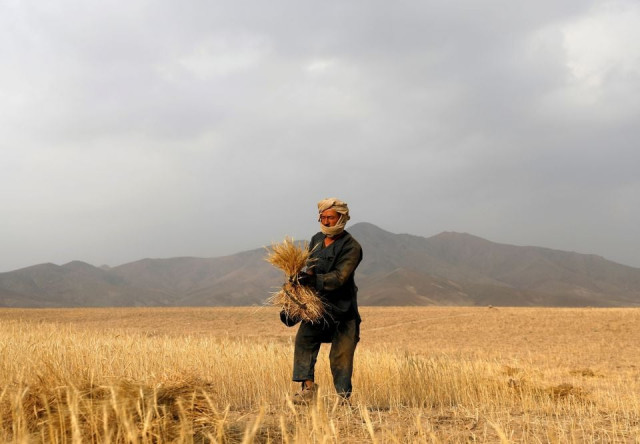Low wheat output, high expenses
Economic outlook report says expenditure will remain higher due to floods

Three days after the central bank increased the interest rates to arrest inflation, the Ministry of Finance hoped for a marginal slowdown in the inflation rate but warned that the country will also see less than the targeted production of wheat.
In its monthly economic outlook report, the finance ministry also said that expenditure will remain higher than last year due to additional flood-related requirements and the industrial output will also remain low. The report painted an overall grim picture of the economy.
According to the Economic Advisor Wing report, it is expected that the consumer price index (CPI) inflation on a year-on-year basis will decline marginally in the month of November and may remain in the range of 23-25%.
Inflationary pressure is expected to ease out slightly on a monthon-month basis due to smooth domestic supplies, unchanged energy prices in November and a stable exchange rate, it added. In a policy statement on Friday, the central bank said that inflation was being driven increasingly by persistent global and domestic supply shocks that were raising costs.
It added that the rise in cost-push inflation cannot be overlooked and therefore necessitates a monetary policy response. Recently, the central bank increased its key policy rate to 16%, while also upward adjusting its average inflation rate forecast to 21% - 23% for the current fiscal year. The average 23% rate means that the yearly inflation rate will be significantly higher than this.
The finance ministry report further added that the targets fixed for the current Rabi-2022- 23 crops seem to be challenging due to delayed sowing in the flood affected areas. Once again, it hoped that the timely rains would impact production in the agriculture sector positively. “The delayed sowing of wheat crop in Sindh is making it challenging to achieve the targets set for Rabi-2022-23 season,” according to the finance ministry. Pakistan is already a food deficient country and imports wheat to meet its domestic requirements.
Last month, the urea and DAP off-take recorded 16.4% and 79% decline respectively, according to the ministry, indicating low demand for the wheat crop. The ministry also saw a slowdown in industrial activities. It said that the cyclical position of Pakistan’s main trading partners has deteriorated, which reflects the widening of the negative output gap. Although Pakistan’s large-scale manufacturing (LSM) cyclical component remained positive, it showed convergence to that of its main trading partners as it remained below its potential path in September 2022.
During the first four months of the current fiscal year, money supply also showed negative growth. On the external front, the finance ministry added that imports stabilised roughly at relatively low levels during the first four months, with the calm in international oil prices, stable exchange rate, and contained domestic demand contributing to its decline. Given these recent dynamics, and unchanged policy assumptions, imports will remain near the current low levels during the coming months. In the coming months, however, it is expected that exports will improve on account of targeted policies announced recently by the government to stimulate exports.
But these dynamics may be hindered, if the economic conditions in the main export markets remain volatile and uncertain. As a result, the trade balance in goods and services has improved marginally. For November 2022, however, further improvement in trade balance is expected. The ministry added that the acceleration in total expenditure outpaced growth in revenues.
The additional requirement of expenditure on flood-related activities has brought various challenges to fiscal sustainability. Furthermore, in an already constrained fiscal position, the government is compelled to allocate additional funds to maintain the law-and order situation due to the ongoing long march in the country. All of which put additional pressure on total expenditure.
A manageable current account deficit and its guaranteed financing via healthy financial inflows is required, it added. Over medium term, sustainable growth requires economic fundamentals based on balanced economic policies. Sufficient investment is needed to increase production capacity and productivity in the economy to realise the high growth of potential output.



















COMMENTS
Comments are moderated and generally will be posted if they are on-topic and not abusive.
For more information, please see our Comments FAQ